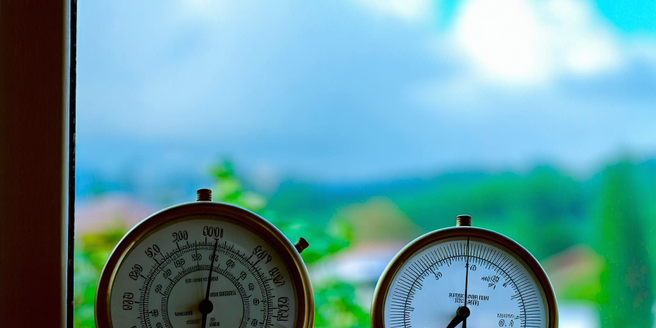
Understanding Atmospheric Pressure and Its Role in Weather Patterns
Atmospheric pressure, a fundamental meteorological concept, refers to the weight of the air pressing down on Earth’s surface. It varies with location and altitude, playing a crucial role in weather patterns. High-pressure systems often bring clear, calm weather, while low-pressure systems are associated with clouds and precipitation. Understanding these patterns helps predict weather changes; for instance, rapid pressure drops may indicate an incoming storm. This knowledge is vital for meteorologists to forecast weather accurately, enabling societies to prepare for potential adverse conditions. The dynamic nature of atmospheric pressure highlights its importance in understanding Earth’s intricate weather systems.
What Causes Atmospheric Pressure Drops?
Atmospheric pressure drops occur when warm air rises, leading to a reduction in the weight of the air above. Factors like temperature gradients, humidity, and geographic features influence these changes. As warm air ascends, it cools and creates a region of low pressure. In turn, air from surrounding high-pressure areas flows in to replace it, sometimes leading to the development of clouds and storms. Pressure changes are also affected by the Coriolis effect, which influences wind patterns and storm systems. Understanding these mechanisms is crucial for meteorologists to anticipate weather transitions and potential storm developments.
The Connection Between Low Pressure and Storm Formation
Low-pressure systems are synonymous with stormy weather. When air pressure drops, it creates conditions conducive to cloud formation and precipitation. This is because the rising warm air cools and condenses, leading to cloud development. For meteorologists, accurately forecasting these events can significantly mitigate the impact of severe weather on communities. Low pressure can also lead to increased wind speeds as the pressure gradient forces air to move quickly from high to low-pressure areas. These factors, combined with moisture and temperature variations, can lead to the formation of severe weather conditions like thunderstorms or cyclones. The understanding of these dynamics is pivotal in predicting and preparing for storms.
How Meteorologists Predict Storms Using Pressure Changes
Meteorologists rely on barometric pressure readings to predict storms. A significant drop in atmospheric pressure often signals the approach of a storm system. Using sophisticated technology, they can track pressure changes in real-time, allowing for accurate weather forecasting. Satellites and radar systems enhance these predictions by providing data on wind patterns, humidity, and temperature. Advanced computer models then process this data to simulate potential weather scenarios. By analyzing these components, meteorologists can forecast storm pathways and potential impact zones. This ability to interpret atmospheric pressure trends is crucial for issuing timely warnings and safeguarding communities against severe weather events.
The Impact of Sudden Pressure Drops on Environment and Society
Sudden drops in atmospheric pressure can have profound impacts on both the environment and society. Environmentally, they can trigger extreme weather events such as storms, hurricanes, or tornadoes, causing damage to ecosystems. On a societal level, these weather events can disrupt daily life, leading to infrastructure damage, economic losses, and potential threats to life. This disruption can also strain community resources and affect mental health. The unpredictability of pressure changes necessitates robust emergency response systems and public awareness campaigns to minimize their impact. Understanding these pressure dynamics is essential for developing strategies to mitigate environmental and societal risks.
Preparing for Storms: Safety Tips and Emergency Measures
Preparation is key to mitigating the dangers of storms caused by atmospheric pressure drops. Staying informed through reliable weather forecasts is crucial. Individuals should have emergency kits containing essentials like food, water, flashlights, and first-aid supplies readily available. Securing property by reinforcing windows and doors can minimize damage. Evacuation plans should be established, especially in areas prone to severe weather. Community-level initiatives like storm shelters and early warning systems enhance safety. Educating the public on safety procedures and maintaining communication during a storm are vital steps in ensuring community resilience against pressure-induced weather events.
